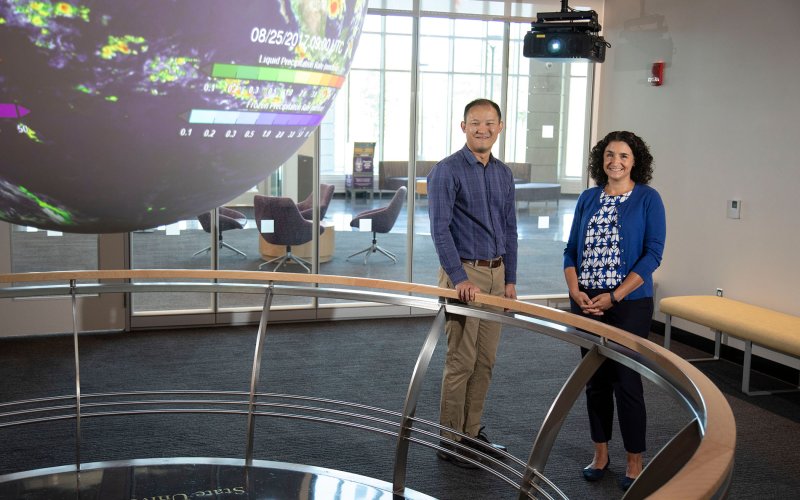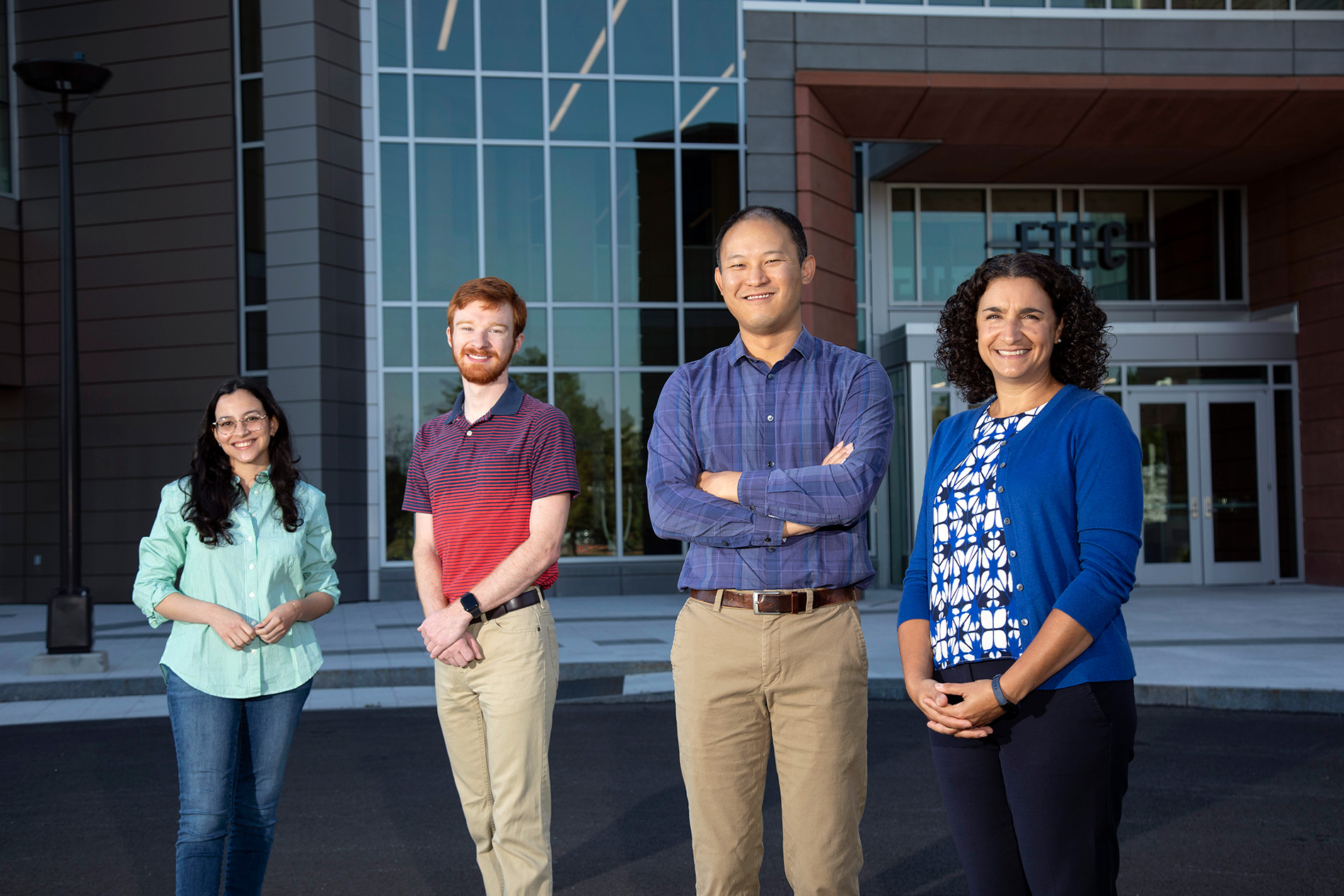Atmospheric Scientists Lead $695K NSF Study to Explore Downshear Reformation of Tropical Storms

By Mike Nolan
ALBANY, N.Y. (Aug. 25, 2022) — Two researchers at the University at Albany’s Department of Atmospheric and Environmental Sciences (DAES) have been awarded $659,000 from the National Science Foundation (NSF) to study the environmental and internal factors that influence the downshear reformation of tropical cyclones.
Downshear reformation occurs when a new storm center forms and strengthens in an area of concentrated thunderstorm clouds. The process occurs early in a tropical cyclone’s development and can happen quickly, usually within a couple of hours.
The three-year NSF project will use observational data, combined with advanced computer model simulations, to explore this poorly understood process.
DAES Associate Professors Brian Tang and Kristen Corbosiero are leading the project, with support from Nathalie Rivera-Torres, a third-year graduate student.
“Downshear reformation is akin to a ‘second birth’ of a tropical cyclone storm center,” said Tang, who is also leading a $2 million Office of Naval Research project to study hurricane intensity. “It typically occurs within a few days after tropical cyclone formation, while a tropical cyclone is still weak, but it doesn’t occur in all tropical cyclones. We do not fully understand why that is the case.”
“When downshear reformation occurs, a storm’s track and intensity can change significantly, degrading the quality of forecasts,” added Corbosiero. “The process can occur very quickly over the open ocean where there are few observations. Thus, only a few cases have been studied in depth.”
Simulating Downshear Reformation

The researchers will first turn to NOAA observations made within tropical cyclones, including aircraft measurements, to compare the environmental factors between storms where downshear reformation occurred and non-downshear reformation cases.
One notable and recent storm that will be analyzed is Hurricane Michael, a powerful and destructive tropical cyclone in 2018 that became the first Category 5 hurricane to make landfall in the contiguous United States since Andrew in 1992.
“Downshear reformation occurred about two-and-a-half days before Hurricane Michael made landfall, resulting in a sizeable shift in the forecast track toward the east,” Tang said. “The storm eventually made its way to the Florida Panhandle as a catastrophic Category 5 hurricane. That shift gave less time for coastal communities and emergency managers to prepare.”
Following the observational analysis, the researchers will run a series of computer model simulations based on past tropical cyclone events. The simulations will slightly change the starting environment conditions, in hopes of creating two groups – one where downshear reformation occurs. By comparing the two groups, they can identify important differences that caused downshear reformation to occur.
Along with its broad impacts on forecasting, the visualizations produced from the project’s simulations will be integrated into coursework materials for UAlbany students and other educational outreach events.
“The impacts of tropical cyclones are increasing at a concerning rate,” Corbosiero said. “Rising sea levels mean a greater risk of storm surge, the deadliest aspect. Storms have been shown to be moving slower as well, meaning more rain and inland flooding. Our goal is to better understand the ways tropical cyclones form and strengthen, not only improving forecasts, but also helping emergency managers make decisions that can protect life and property.”
Diversity in STEM
Rivera-Torres, who is working toward a PhD in Atmospheric Sciences and Meteorology, has been studying the environmental factors important in downshear reformation since joining UAlbany in 2019.
During the academic year, she is supported by the Carson Carr Graduate Diversity Fellowship, a competitive, merit-based award given to students who contribute to the diversity of the student body.
Rivera-Torres is a Puerto Rico native and was affected by Hurricane Maria, a Category 5 storm that devastated the northeastern Caribbean in Sept. 2017.
“When I first started studying downshear reformation, I recognized some of the storms that reformed near Puerto Rico and whose forecasts I remember changed quickly. So, I have experienced, first-hand, how the reformation process can affect hurricane preparedness and decision-making,” said Rivera-Torres. “It is essential to understand what causes downshear reformation and its implications on the impact of tropical cyclones to help improve forecasts and emergency plans.”
The new NSF grant will also fund the PhD research of third-year graduate student, Nicholas Johnson, who will study the way dry air around tropical cyclones impacts development and structure.




